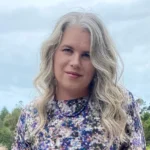Education Minister Erica Stanford was recently interviewed in the wake of the release of an ERO Report into the initial implementation of a compulsory history curriculum in Aotearoa’s schools. In the interview, she emphasised improving the ‘balance’ between exploring local stories and investigating the national or global contexts, arguing that local stories had been given too much prominence in the classroom in the first year of implementation.
Meanwhile, in the same article, the ACT Party education spokesperson Laura Trask provided an statement criticising the ‘flawed and divisive’ curriculum, and suggesting it divides ‘history into villains and victims, contains significant gaps and entrenches a narrow understanding of New Zealand’s history.’
The statements of these two MPs reflect different ideas of ‘balance’. Stanford explores the ‘balance’ of scale—to what extent should we zoom out and look at national and international perspectives alongside local examples? Trask seems to emphasise ‘balance’ of viewpoint, though her critique is harder to reconcile with the curriculum documents and the ERO report. Exploration of the viewpoints of different historical actors is one of the critical components of the curriculum, particularly as ākonga progress through their intermediate years and beyond.
Whether one is in agreement with these government MPs or not, the ERO report and its reception provides a salient opportunity for historians and those producing curriculum support materials to ask themselves how they might bring ‘balance’ to their mahi, and to reflect on what ‘balance’ looks like for their organisation. How will we, as a project inaugurated by the Anglican Hāhi, seek balance in our mahi?

